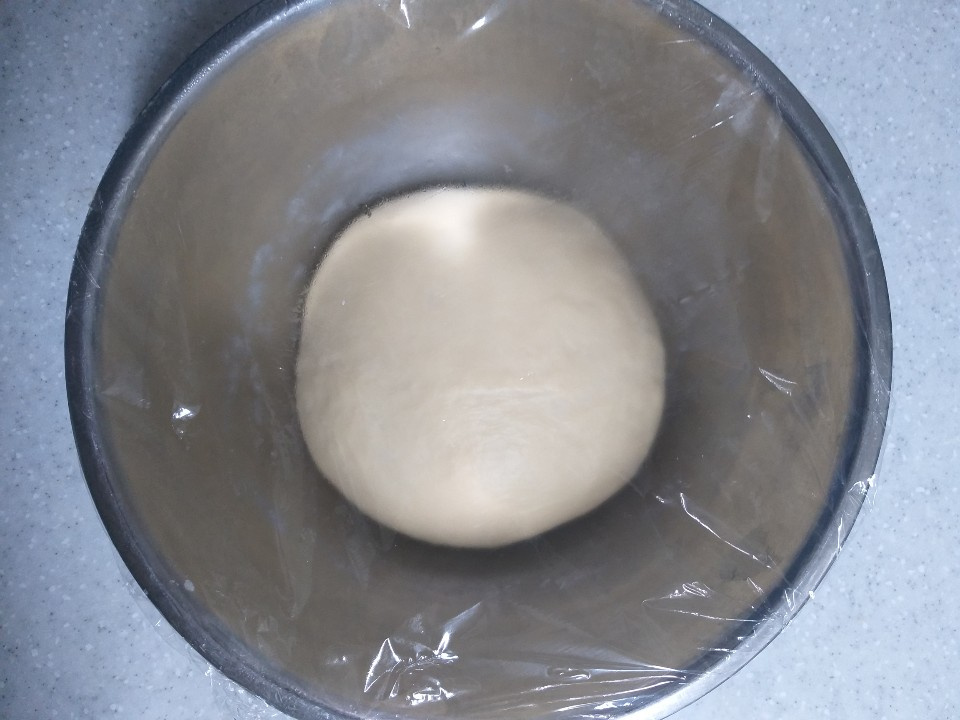Homemade Sausage Pizza Bread: A Nostalgic Treat
Making Sausage Pizza Bread: The Secret to Perfect Dough

Relive your childhood memories with this recipe for homemade sausage pizza bread! Warm, fluffy, and delicious, this is a delightful snack that the whole family can enjoy creating and savoring together.
Dough (Makes 5 Breads)- 250g Bread Flour: This high-protein flour is ideal for creating a chewy bread texture.
- 30g Sugar: Adds sweetness and acts as food for the yeast, promoting better dough rising.
- 50ml Milk: Contributes to a soft crumb and richer flavor. Use lukewarm milk.
- 50ml Water: Helps achieve the right dough consistency and ensures tenderness. Use lukewarm water.
- 3g Salt: Balances the flavors and strengthens the gluten structure for a chewier bite.
- 1 Egg: Enriches the dough, adding softness and a pleasant color. Use a room-temperature egg.
- 25g Butter: Makes the bread tender and adds a lovely richness. Ensure it’s softened at room temperature.
- 5g Yeast: The magic ingredient that makes the dough rise. Instant dry yeast or active dry yeast works well.
Cooking Instructions
Step 1
Gather and prepare your ingredients. Measure out the bread flour, sugar, milk, water, butter, salt, egg, and yeast. Gently warm the milk and water to about 105°F (40°C); this temperature helps activate the yeast. Take the butter out of the refrigerator so it softens to room temperature.

Step 2
Activate the yeast for optimal rising. In a small bowl, combine the lukewarm water (or milk) with the yeast. Stir gently and let it sit for about 5 minutes. You should see a foamy layer forming on top, which indicates the yeast is alive and active. This step boosts its leavening power.

Step 3
In a small bowl, combine the lukewarm water (or milk) and the activated yeast mixture. Stir well for about 1 minute until the yeast is fully dissolved and integrated.

Step 4
In a large mixing bowl, sift the 250g of bread flour. Create a well in the center of the flour. Add the 30g of sugar into one side of the well and the 3g of salt into the other. **Important Tip:** Avoid letting the salt and yeast come into direct contact, as salt can inhibit yeast activity. Covering them with a bit of flour helps keep them separated initially.

Step 5
Gently cover the areas with sugar and salt with a little flour. Use a spatula or your hand to lightly mix the flour with the sugar and salt, ensuring they are evenly distributed within the flour.

Step 6
Now, add the activated yeast liquid and the room-temperature egg to the bowl. Use a spatula to begin mixing everything together until a shaggy dough starts to form. Mix just until no dry flour remains visible.

Step 7
Once the ingredients start coming together into a cohesive mass, it’s time to transition from mixing to kneading. Transfer the dough from the bowl to a clean countertop or a large baking sheet for more effective kneading.

Step 8
Begin the kneading process. Use the heel of your hand to push the dough away from you, then fold it over and repeat. Continue this motion for about 5-10 minutes until the dough becomes smoother and develops elasticity. It might feel sticky at first, but keep kneading!

Step 9
Knead the dough vigorously on your clean work surface or baking sheet. Stretch it out, fold it, and press down. This repetitive action develops the gluten, which gives the bread its signature chewy texture. Think of it like kneading laundry for the dough.

Step 10
Once the dough has gained some elasticity, add the 25g of softened room-temperature butter. Continue kneading until the butter is fully incorporated into the dough, which might take another 5-10 minutes. The butter will make the dough noticeably smoother and more pliable.

Step 11
You can check if the dough is ready by performing the ‘windowpane test.’ Gently stretch a piece of the dough. If you can stretch it thin enough to see light through it without it tearing, your dough is perfectly developed. Once ready, place the dough back into a clean bowl, cover it tightly with plastic wrap, and let it begin its first rise.

Step 12
Place the covered bowl in a warm, draft-free spot (like inside a turned-off oven, a turned-off microwave, or a sunny windowsill) for 1.5 to 2 hours, or until the dough has doubled in size. A well-risen dough is key to light and airy pizza bread.




